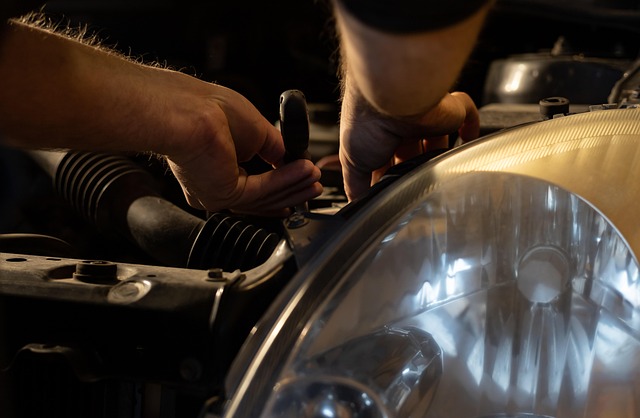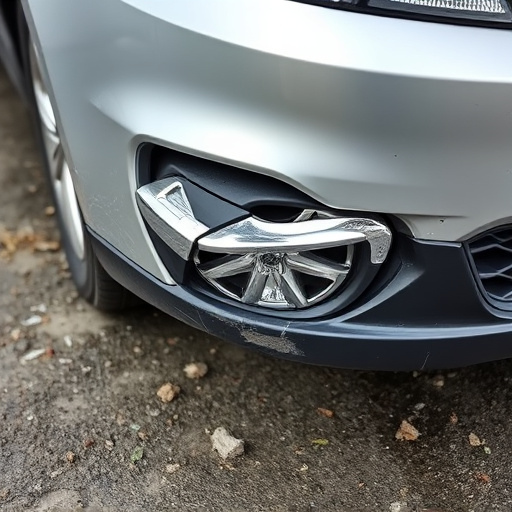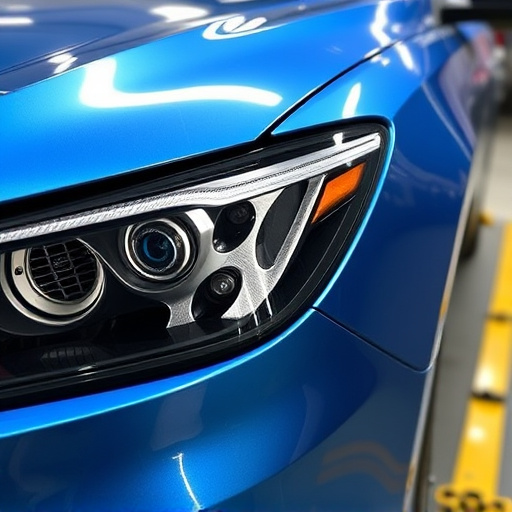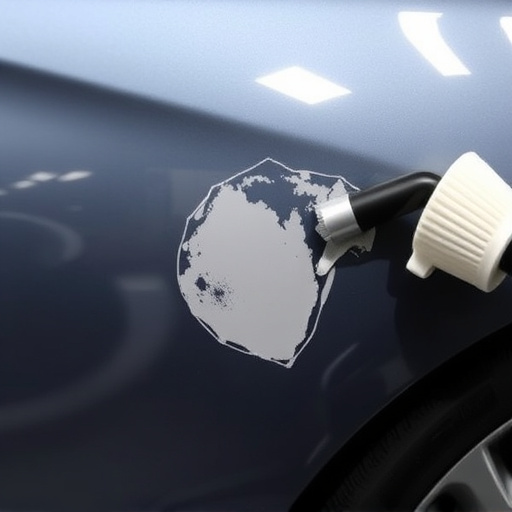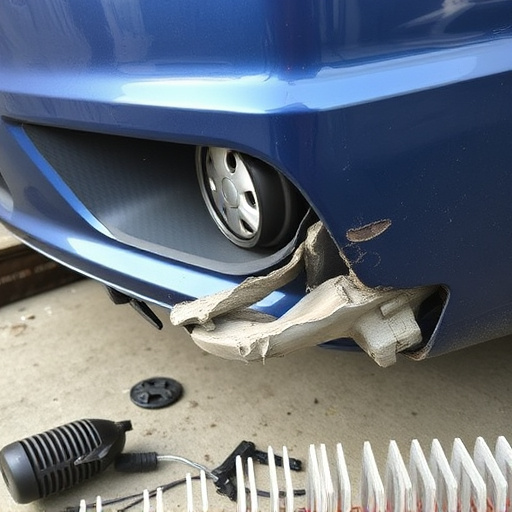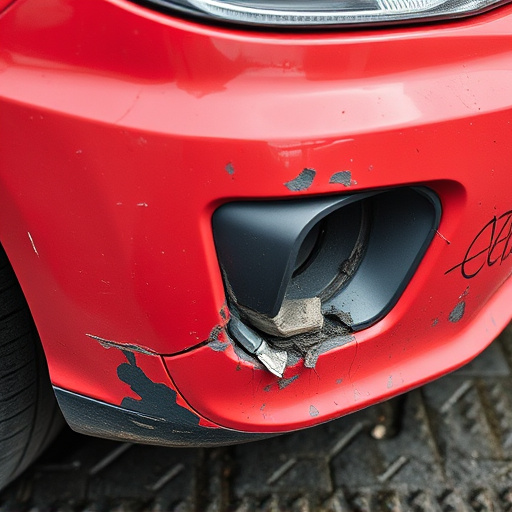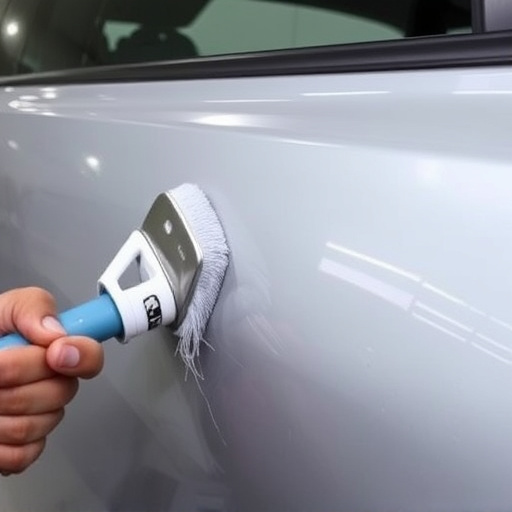Dent repair technologies have revolutionized automotive services with advanced tools like CAD software and robotics, enabling precise, efficient repairs using lightweight composite materials. These innovations streamline processes, enhance vehicle performance, and promote sustainability, transforming collision centers into high-tech workshops with future advancements promising even faster, more environmentally friendly repairs.
In today’s automotive landscape, understanding dent repair technologies is paramount for both professionals and enthusiasts. This article delves into the advanced tools reshaping the dent repair industry, highlighting technology’s role in achieving precision repairs. We explore emerging innovations that promise even faster, more effective solutions. By shedding light on these cutting-edge techniques, we equip readers with insights into the future of dent repair, where efficiency and quality converge.
- Exploring Advanced Dent Repair Tools
- Technology's Role in Precision Repairs
- Future of Dent Repair: Innovations Unveiled
Exploring Advanced Dent Repair Tools
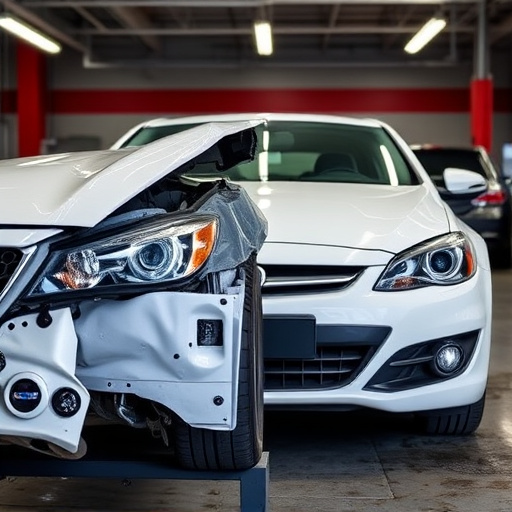
In the realm of cutting-edge dent repair technologies, professionals are equipped with a sophisticated arsenal to cater to modern vehicle needs. Exploring advanced dent repair tools involves delving into innovative solutions that go beyond traditional methods. With the evolution of automotive repair services, car body shops now boast state-of-the-art equipment designed to enhance precision and efficiency. These tools are not merely gadgets; they are the heart of a revolution in auto body repair, enabling technicians to restore vehicles to their pre-incident condition with remarkable speed and accuracy.
One notable development is the integration of computer-aided design (CAD) software and robotic systems. These technologies allow for detailed analysis and precise manipulation of damaged panels, ensuring exact repairs that match the vehicle’s original specifications. Moreover, advancements in material science have led to lighter and stronger composite materials, which, when combined with advanced repair techniques, result in durable and aesthetically pleasing fixes. Such innovations not only streamline the dent repair process but also contribute to overall vehicle performance and safety.
Technology's Role in Precision Repairs

The advent of cutting-edge dent repair technologies has revolutionized the way automotive damage is addressed, emphasizing precision and efficiency. Technology plays a pivotal role in enabling detailed repairs that were once laborious and time-consuming. Modern tools, such as computer-aided design (CAD) software and laser measuring systems, allow for exact measurements and precise identification of dent locations. This level of accuracy ensures that every imperfection is addressed, resulting in restoration that closely mimics the vehicle’s original state.
Furthermore, these technological advancements streamline the process at collision repair centers, including auto glass replacement and hail damage repair. By automating repetitive tasks and providing real-time data visualization, repair technicians can make informed decisions quickly. This not only enhances the quality of repairs but also reduces turnaround times, making dent repair technologies a game-changer in the industry.
Future of Dent Repair: Innovations Unveiled
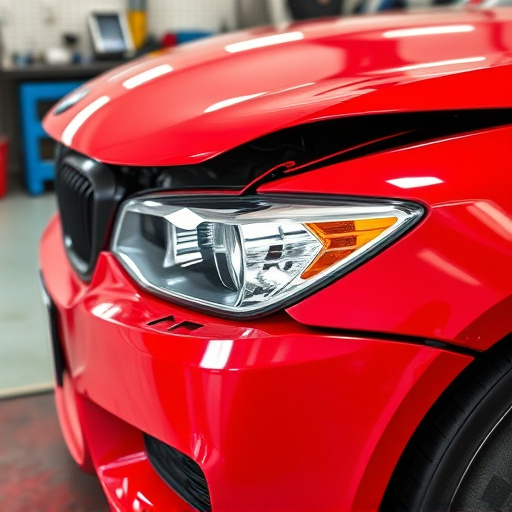
The future of dent repair is here, with cutting-edge technologies revolutionizing the way we address automotive dents and scratches. Innovations such as laser repair systems and robotic assistance are transforming collision repair centers into high-tech workshops. These advanced tools offer unparalleled precision and speed, ensuring that vehicles can be restored to their original condition in a fraction of the time traditional methods take.
With ongoing research and development, dent repair technologies are expected to become even more efficient and accessible. For instance, automated paint mixing systems and intelligent material recognition software will streamline the painting process, reducing human error and enhancing color accuracy. Additionally, advancements in auto glass repair techniques, including laser-based bonding and nanocoatings, promise improved strength and durability, making them a game-changer for safety and longevity. These innovations collectively point to a future where automotive restoration is not just efficient but also environmentally friendly, as many of these technologies aim to minimize waste and reduce the carbon footprint associated with traditional dent repair practices.
Cutting-edge dent repair technologies are transforming the way we address car damage. From advanced tools that enable precise repairs to innovative future innovations, these developments promise faster, more efficient, and cost-effective solutions. By understanding the tools behind these technologies, we can appreciate how far we’ve come in the field of dent repair and look forward to an even smoother, more seamless automotive care experience ahead.
